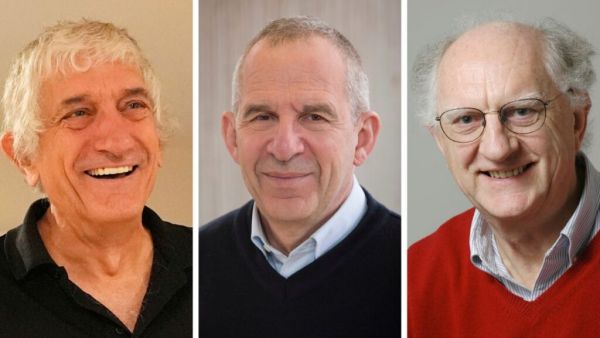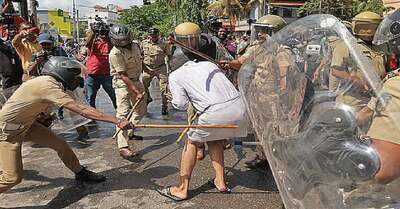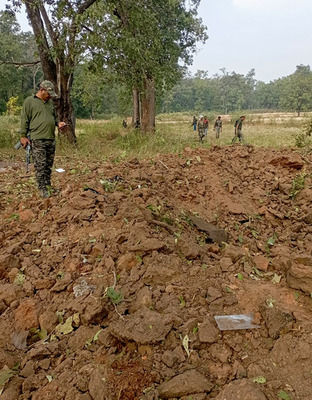
There’s so much delightful science happening around us these days that it’s hard to decide what to marvel at first. A team of European physicists were honoured with the Ig-Nobel Prize for uncovering the ideal starch concentration, precise cheese-water emulsions, and guidelines for temperature for creating a creamy, smooth sauce, in the now famous Cacio-e-pepe study. Another study burst the age-old myth that nursing mothers must avoid garlic; instead, it showed that babies in fact liked garlic-flavoured milk and nursed longer when their mothers consumed garlic, winning the researchers the Ig-Nobel in Paediatrics.
Meanwhile, the ‘regular’ Nobel Prize reminds us that curiosity can rewrite physics. In the piece on the 2022 Nobel Prize for Physics, I had ended on a hopeful note, “We will perhaps witness very soon if Mother Nature, what Einstein deemed as ‘God’, indeed plays dice, or if she doesn’t. Interesting times are all ahead of us.” Little did I know the interesting times would be here so soon.
Here we are in 2025, when three scientists have been awarded the Physics Nobel Prize again in the arena of quantum computing. As always, chatter is high on questions like what is different this time, and why this prize now?
The three curious minds
The three laureates, John Clarke, Michel Devoret, and John Martinis, did their prizewinning work together in the mid-1980s at the University of California, Berkeley. At the time, Clarke was leading the group with Devoret as a postdoctoral researcher and Martinis as a graduate student.
John Clarke, born in Cambridge, had moved to Berkeley after completing his PhD. He specialised in superconductivity and Josephson junctions, and led the research group focusing on macroscopic quantum phenomena. Michel Devoret, from Paris, brought theoretical boldness and creativity when he joined Clarke’s group as a postdoc. John Martinis, a first-generation American, was an engineering-minded graduate student who helped build the apparatus needed to demonstrate the effect, which was crucial in turning theory into experiments.
From Waves and Walls to Circuits and Chips
As Feynman once said: ‘If you think you understand quantum mechanics, you don’t understand quantum mechanics.’ Yet here I am taking a shot at demystifying ‘quantum tunnelling’, which is the buzzword associated with this year’s prize.
In quantum tunneling, a particle trapped behind an energy barrier somehow sneaks through to the other side without the energy needed to climb over it. The math works, the intuition struggles.
Erwin Schrödinger formalised the wavefunction in 1926, and Friedrich Hund soon after applied it to a particle in a potential valley; the concept of tunnelling emerged. By 1928, George Gamow and, independently, Gurney and Condon, had shown that alpha decay in radioactive atoms could be explained by this very mechanism. Yet for most of the 20th century, physicists assumed tunneling was limited to the realm of the subatomic: electrons, nuclei, and photons. Surely, macroscopic systems, millions of particles acting together, would behave “classically,” as these would be too large to tunnel through anything. Clarke, Devoret, and Martinis disagreed.
What is so important about this work? What did they prove and why was it considered worthy of a Nobel?
A Josephson’s junction is made with an insulating layer sandwiched between two superconducting wires. This insulating layer allows pairs of electrons to quantum mechanically tunnel through it, enabling unique superconducting phenomena known as Josephson’s effect. Brian Josephson had made this theoretical discovery at Cambridge that led to his Nobel Prize in Physics in 1973, after it was experimentally proven at Bell Labs.
In the mid-1980s, an ordinary-looking circuit was constructed that made use of these junctions. In a 1985 paper in Physical Review Letters, the three 2025 laureates reported that, when chilled to very cold conditions, the superconducting circuit could tunnel between a ‘state’ in which there is no voltage across the junction and one in which there is, thus bringing the Josephson effect from the quantum world to the macroscopic realm. To add a cherry on the cake, they also showed, in later experiments, that the circuit absorbed energy in discrete chunks, which is known as quantization.
The circuit could exist in quantized energy states and, most spectacularly, that the state defined by Cooper pairs could ‘tunnel’ across the insulating barrier, switching states in a probabilistic fashion. In effect, the whole circuit behaved like an artificial atom. This was not merely a demonstration of Josephson’s theory; it also proved that quantum mechanics does not resign itself to the boundary of the microscopic. It extended the frontier.
One might now ask: is this only a beautiful proof-of-principle, or does it have a tangible impact? The answer is an emphatic yes. The implications are profound.
First, this work laid foundational principles for superconducting qubits, one of today’s leading platforms for quantum computing. Quantum bits are building blocks of quantum logic as opposed to conventional ‘digital’ bits, zero and one, on which the current digital logic relies.
Second, these circuits allow extreme sensitivity to magnetic flux, and thus can be used to make highly accurate sensors like SQUIDs (Superconducting Quantum Interference Devices), which have broad applications in geophysics, medical imaging, biomagnetism, and fundamental physics.
Third, this work means that quantum cryptography and fault-tolerant quantum information protocols have a stronger footing. The fact that quantum mechanics can persist in macroscopic circuits emboldens researchers to scale, control, and integrate them into future technology. In short, what was once the realm of thought experiments now becomes an engineering tool.
The 2025 Nobel Prize in Physics rewards more than a demonstration of “quantum weirdness on a chip.” It recognises that the rules of the microscopic can be coaxed, guided, and controlled in circuits of macroscopic size. Clarke, Devoret, and Martinis have shown us that the quantum world need not be shrouded in inaccessibility; it can be engineered, manipulated, and harnessed. Building superconducting qubits requires precision cryogenics, advanced nanofabrication, and sophisticated control electronics, areas where close collaboration between academia and industry is essential.
The next quantum leap could emerge from an academic lab in Stanford, Tsinghua, Delft, Tainan, Bangalore, Sydney or, as Martinis’ journey shows, from a corporate enterprise. In any case, it will stand firmly on the shoulders of these pioneering giants.
(The author holds a Ph.D. in experimental Condensed Matter Physics from National Taiwan University. Currently, the author works at Imec-Leuven on EUV lithography)
The opinions expressed in this article are those of the author and do not purport to reflect the opinions or views of THE WEEK.


